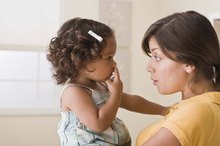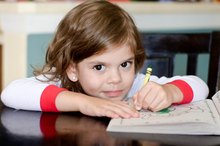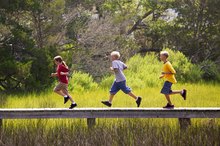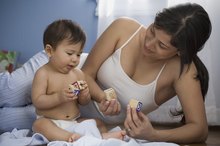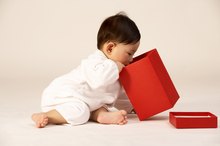Where Should a 3 1/2-Year-Old Be Developmentally?
A child's developmental milestones depend on two main factors: nature and nurture. Nature refers to the child's genetic makeup -- her DNA -- a conglomeration of traits handed down to the child by her parents. Nurture is the environment in which the child lives, plays and learns. Because every 3 1/2-year-old has a different genetic makeup and environment, there is a wide range of what's normal for children this age.
Academic Development
A child that is 3 1/2-years-old -- or 42 months old -- is quickly mastering his communication skills. By this age, he should have an extensive vocabulary and be able to quickly learn new words and integrate them into his increasingly long sentences. His grammar skills are improving as well; while he may still have problems using the correct tense of verbs or matching up subject-verb agreement, these errors are increasingly rare.
Your 3 1/2-year-old is also rapidly improving his ability to recognize numbers and letters, implementing them into his daily life, although he may confuse them at times 1. As his memory improves, he'll be able to recognize individual numbers and letters upon sight, and repeat series of numbers of letters on command.
- A child that is 3 1/2-years-old -- or 42 months old -- is quickly mastering his communication skills.
- Your 3 1/2-year-old is also rapidly improving his ability to recognize numbers and letters, implementing them into his daily life, although he may confuse them at times 1.
Social & Emotional Development
Signs of Autism in a 9 Month Old
Learn More
By 42 months, many children have already been introduced to a preschool setting, hence this group is often referred to as preschoolers. Whereas just a few months earlier she engaged in parallel play, your 3 1/2-year-old is now less shy and actively engages with other children 1. She enjoys imaginative play, often placing herself and her friends at the center of fairy tales of her own creation. She is learning to form her own friendships, based on similar likes and dislikes. While she enjoys playing with others, she is also capable of extended periods of independent play. Although the terrible 2s are now over, she still has trouble regulating her temper and throws tantrums from time to time when things don't go her way.
- By 42 months, many children have already been introduced to a preschool setting, hence this group is often referred to as preschoolers.
- She is learning to form her own friendships, based on similar likes and dislikes.
Physical Development
Additionally, 3 1/2-year-olds are on the move constantly. At 42 months, your child can now run, jump, climb, roll, dance and play just about any sport, albeit on a rudimentary level. Increased muscle control means he can throw a ball with two hands, catch it when it's thrown back to him and kick a ball at a large target. His fine motor skills are improving as well; his dexterity makes puzzles and block stacking favorite pastimes. Even his physical appearance is gone; by this age, he no longer has the top-heavy appearance of a toddler, and his torso, head and limbs have a similar proportion to those of an adult. Many children this age are able to control their bladder and bowel movements, but still have accidents especially at night and naptime.
- Additionally, 3 1/2-year-olds are on the move constantly.
- Many children this age are able to control their bladder and bowel movements, but still have accidents especially at night and naptime.
Signs of Trouble
Activities to Promote Perceptual & Motor Skills
Learn More
Not all children develop at the same pace -- there is a wide range of normal at this age. However if your 3 1/2-year-old is overly-clingy to you or another caregiver, shows little interest in playing with other children, has delayed gross or fine motor skills, cannot form a sentence of more than three words or loses the ability to perform skills and tasks she was once able to do, contact your pediatrician for an assessment 1.
Related Articles
References
Writer Bio
Elizabeth Falwell has been writing for the TV news industry since 2005. Her work has appeared on WXII 12 News, WMGT 41 News, NewParent.com and multiple parenting blogs. A graduate of the S.I. Newhouse School at Syracuse University, Falwell holds a Master of Science in broadcast journalism.



